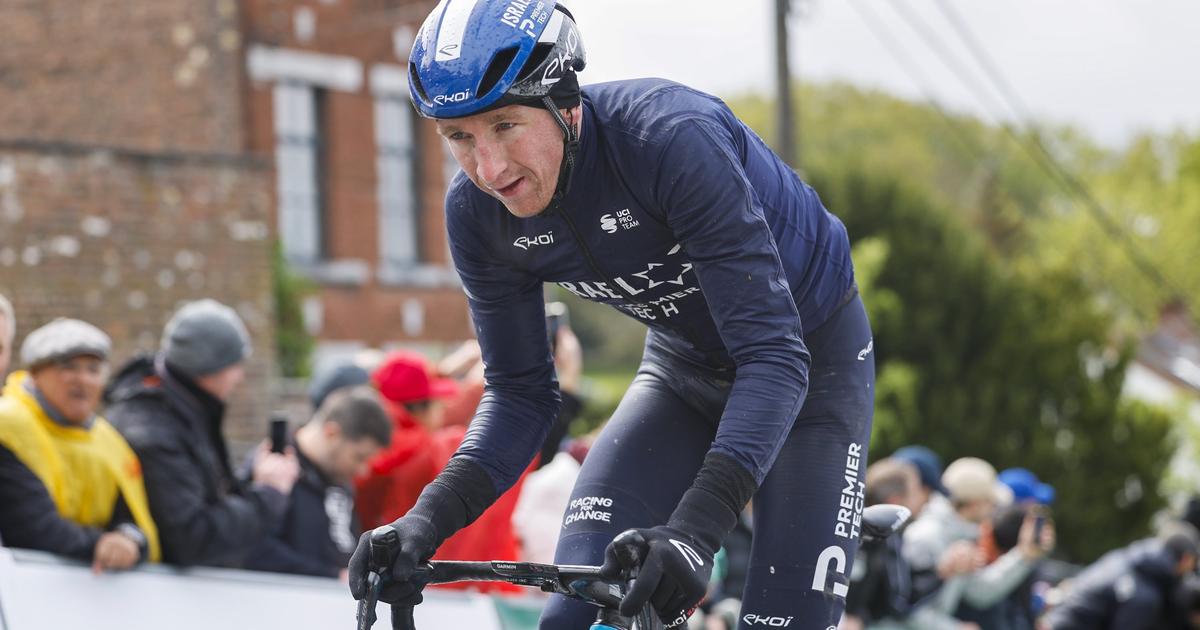The 10 Nepalese mountaineers who ascended K2 last Saturday, photographed back at base camp.
Nirmal Purja is second from the left, squatting and wearing sunglasses.
The conquest of the K2, in the summer of 1954, as now its first winter season, also saw an episode related to the use of bottled oxygen.
A huge Italian expedition planted Lino Lacedelli and Achile Compagnoni on its summit, two who swore and perjured that they did not use artificial oxygen to sign the first ascent of the second highest mountain on the planet (8,611 meters).
At the time, no code of ethics required mountaineers to dispense with the precious cylinders, especially not to circulate at 8,600 meters.
But they both lied (out of vanity?) And it took decades to admit it.
A year earlier, in 1953, Edmund Hillary refused to set foot on the summit of Everest when his Nepalese partner, Tenzing Norgay, wanted to give him the honor of conquest.
"You're at home, you have to be the first," Hillary reasoned.
The top photo shows Norgay holding an ice ax with two flags: the Nepalese and the United Kingdom, an image very similar to the one that Nirmal Purja, one of the 10 Nepalese who signed last Saturday, just posted on his social networks the first winter summit of K2 and the only one that does not belong to the Sherpa ethnic group.
His past in the British Army as a Gurkha Special Forces soldier explains the display of both flags.
The use of bottled oxygen is again topical in the K2, and if surprising was that the Italians claimed not to have used it, equally unexpected has been the announcement that there was a member of the team, Nirmal Purja himself, who ascended without bottled assistance .
There is no reason not to believe him, and many to take his hat off to the mountaineer who has already collected the 14 highest peaks in the world in just over six months.
A debate may be generated about ethical nuances: his colleagues opened the trail and placed the fixed ropes, his team would have assisted him in a pinch, a rope of two and without bottled oxygen could have signed an even more ascent clean and creditable… but none of this detracts from the fierce, effective and beautiful management of a team of 10 that reached the top of the hand.
"We have nothing to teach them and it would be good if we learned something from them, especially if we consider how badly the Westerner has treated them," sums up Alberto Iñurrategi, one who knows what it means to climb the 14 eight-thousand.
Nirmal Purja assures that making the decision to dispense with bottled oxygen was a complex task: “I admit that I had always used artificial oxygen above 8,000 meters, but I knew that up to that height my body works very well, so I had powerful reasons for believe in me.
However, the maximum altitude I was able to sleep at was 6,600 meters, and that's not enough in terms of acclimatization, so it was not clear to me and I was afraid of slowing down the rest of the team and putting them in danger.
The safety of my team has always been my top priority and in fact no one in 20 expeditions has suffered any harm.
Personally, I am not concerned with the debate on the means of climbing a mountain, on what is ethical and what is not.
Nature and mountains belong to everyone: follow your own call! ”.
Nirmal's speech, without being erroneous, too easily ignores decades of mountaineering history: the means chosen when facing a mountain do matter in the mountaineering world because they define the real value of the company in technical and commitment issues .
It is not the same to reach a summit by cable car than to do it on foot, and from this rude example it is easy to understand that in the 21st century certain mountaineers refuse to climb as in the past and prefer paths of difficulty, exploration and maximum uncertainty to lead the game from mountaineering to unthinkable altars.
Still, no one denies the enormous value of what the Nepalese team achieved in the winter K2.
"Now those who wish to try the winter K2 in roped will have less pressure," says Simone Moro, the Italian who resurrected in 2005 the abandoned taste for winter eight-thousand and who has first climbs to Shisha Pangma, Makalu, Gasherbrum II and Nanga Parbat .
An atypical trajectory
The mountaineering world especially celebrates the final emancipation of Himalayanism from Nepal.
A glance at the résumé of the 10 Nepalese who have just conquered the winter K2 is simply overwhelming, including a European-trained guide, Mingma G, who accredits the UIAGM credential, the benchmark qualification.
The atypical mountain path of Nirmal Purja is not without attention: the first time he put on crampons was in 2012, a meager period of time when compared with the European philosophy that considers that learning the mountain begins with little to leave the crib.
On the other hand, Purja does not need lessons in logistics and strategy: the ability of his team to successfully overcome the challenges in the highest mountains of the planet has something supernatural, since there is no known resignation.
However, his voracious passage through the eight thousand serves to ruin the aura of a setting that the passage of time never just feels bad.

/cloudfront-eu-central-1.images.arcpublishing.com/prisa/FG2I2KIU7JDG5FIYAHSDEBWL3E.jpg)











/cloudfront-eu-central-1.images.arcpublishing.com/prisa/SIL73HWCGXKSZBZRANYT36EZLI.jpg)
